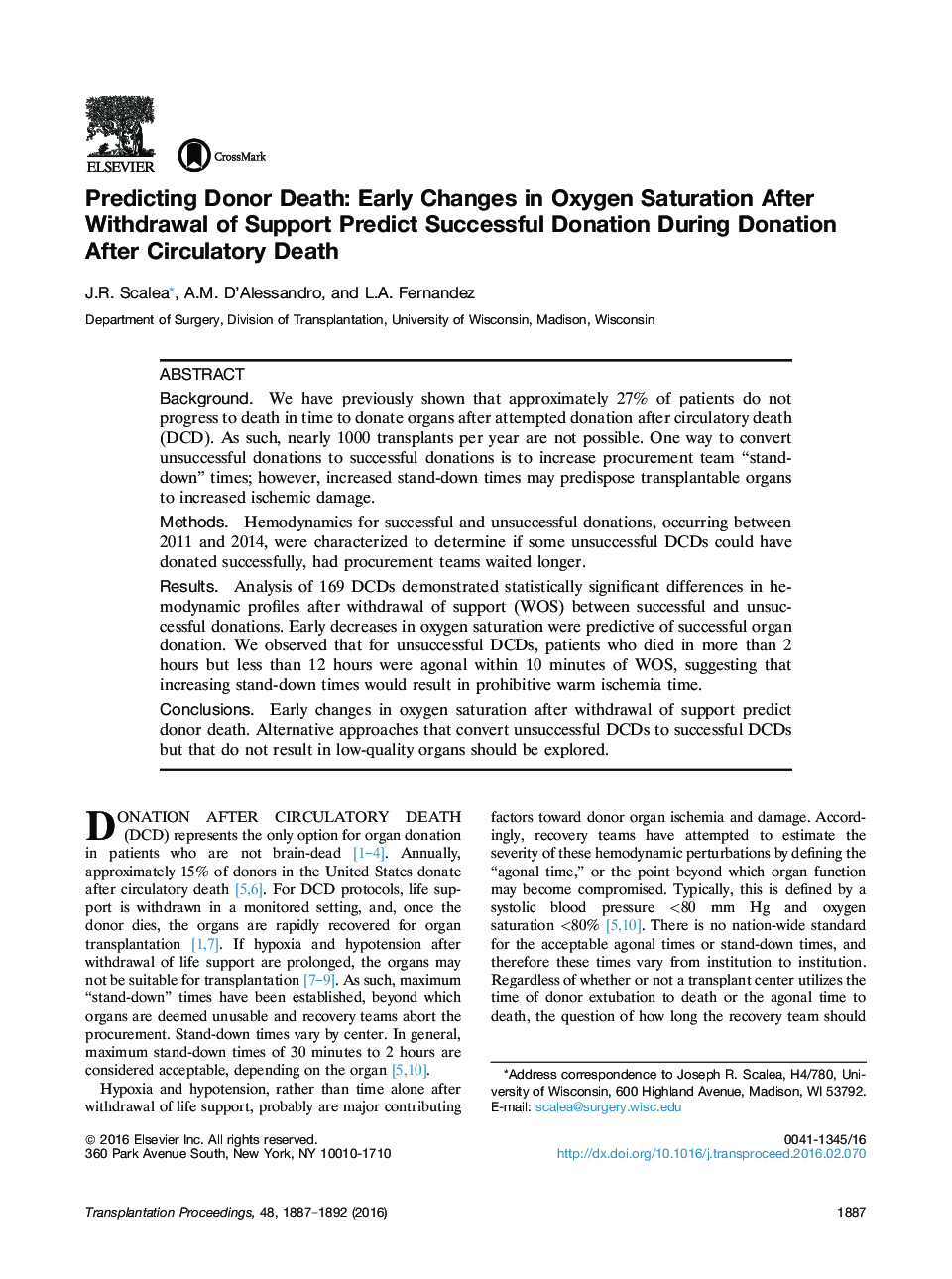| کد مقاله | کد نشریه | سال انتشار | مقاله انگلیسی | نسخه تمام متن |
|---|---|---|---|---|
| 5729116 | 1411676 | 2016 | 6 صفحه PDF | دانلود رایگان |
- There are clearly different hemodynamic patterns that may be helpful in predicting the death of successful DCD donors.
- Improvements in donor management may change the way we allocate resources for DCD organ donations.
- Early changes in oxygen saturation represent a good metric for predicting death during a DCD recovery.
- Increasing the stand-down times to 12 hours will not contribute significantly to the organ donor pool.
BackgroundWe have previously shown that approximately 27% of patients do not progress to death in time to donate organs after attempted donation after circulatory death (DCD). As such, nearly 1000 transplants per year are not possible. One way to convert unsuccessful donations to successful donations is to increase procurement team “stand-down” times; however, increased stand-down times may predispose transplantable organs to increased ischemic damage.MethodsHemodynamics for successful and unsuccessful donations, occurring between 2011 and 2014, were characterized to determine if some unsuccessful DCDs could have donated successfully, had procurement teams waited longer.ResultsAnalysis of 169 DCDs demonstrated statistically significant differences in hemodynamic profiles after withdrawal of support (WOS) between successful and unsuccessful donations. Early decreases in oxygen saturation were predictive of successful organ donation. We observed that for unsuccessful DCDs, patients who died in more than 2 hours but less than 12 hours were agonal within 10 minutes of WOS, suggesting that increasing stand-down times would result in prohibitive warm ischemia time.ConclusionsEarly changes in oxygen saturation after withdrawal of support predict donor death. Alternative approaches that convert unsuccessful DCDs to successful DCDs but that do not result in low-quality organs should be explored.
Journal: Transplantation Proceedings - Volume 48, Issue 6, JulyâAugust 2016, Pages 1887-1892
